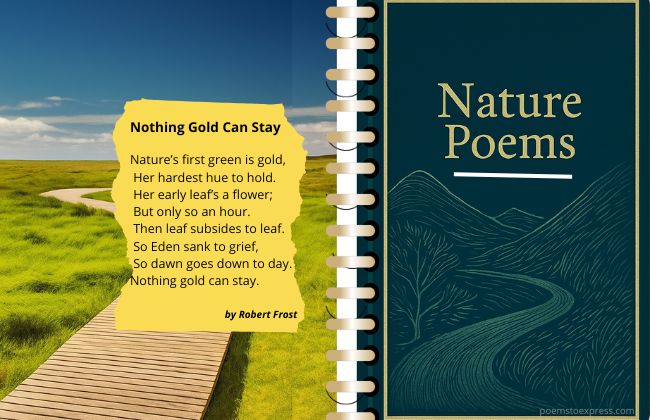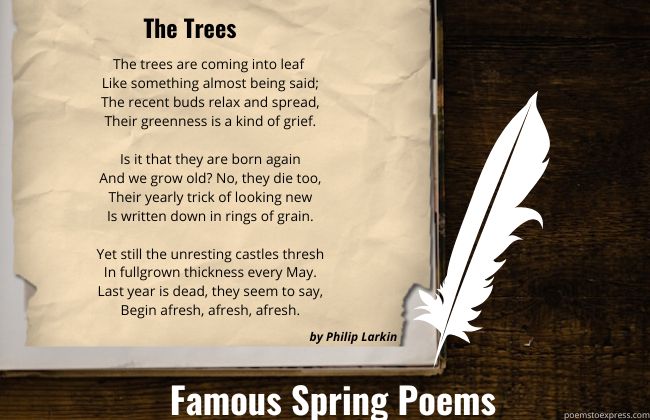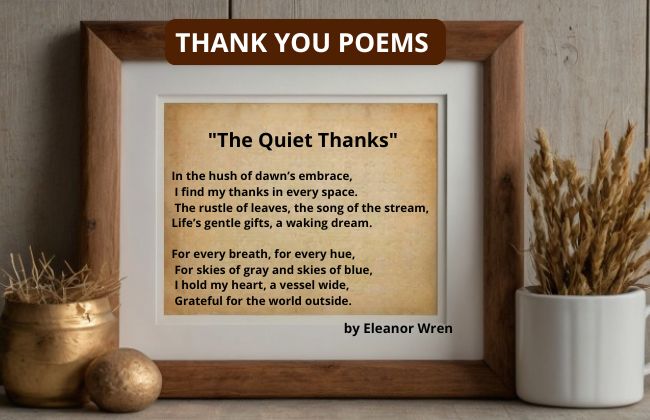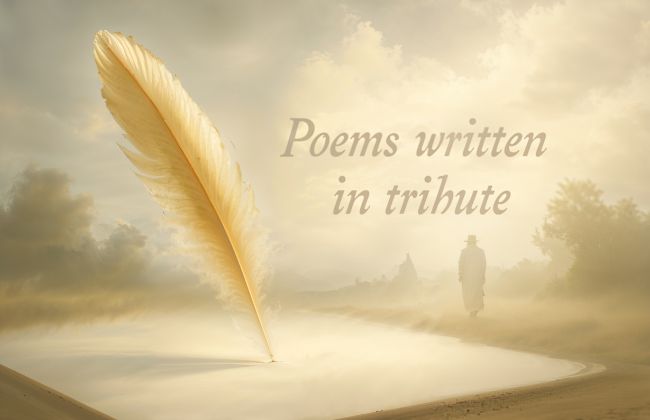Spiders, with their silent presence and their ability to weave complex webs, have been a source of inspiration for poetry lovers.

Poems about spiders capture the intricate beauty and complexity of these arachnids, intertwining themes of nature, fear, and fascination.
These verses often explore the delicate art of spider webs, the mysterious lives of these creatures, and their role in the ecosystem.
Poets draw on the symbolism of the spider, representing creativity, patience, and the interconnectedness of life.
By examining the duality of spiders as both predators and creators, these poems invite readers to reflect on their own perceptions and experiences with the natural world.
We invite you to explore our collection of poems dedicated to spiders. Discover how each line can be a thread that leads you to a new way of seeing and appreciating what surrounds us.
Table of Contents
- 1 1) “The Spider and the Fly” by Mary Howitt
- 2 2) “A Noiseless Patient Spider” by Walt Whitman
- 3 3) The Spider holds a Silver Ball by Emily Dickinson
- 4 4) ‘Pretty is That Pretty Does’ by Alice Cary
- 5 5) “The Spider as an Artist” by Emily Dickinson
- 6 6) ‘Design’ by Robert Frost
- 7 7) ‘The Spider’s Web’ by E. B. White
- 8 8) A Spider’s Web by Jonathan Platt
- 9 9) The Spider and the Ghost of a Fly by Vachel Lindsay
- 10 10) A Fly Stuck In A Spider’s Web by Francis Duggan
- 11 Themes and Symbolism in Spider Poems
1) “The Spider and the Fly” by Mary Howitt
“The Spider and the Fly” is a well-known poem by Mary Howitt, written in 1828. Renowned for its moral lesson, the verse showcases Howitt’s talent for storytelling and use of rhyme to engage young readers.
The poem unfolds as a narrative where a cunning spider attempts to entice a naive fly into his web through deceptive flattery.
Despite its simple presentation, the poem is an allegory warning against the dangers of falling prey to flattery and the importance of not being deceived by outward appearances.
Howitt effectively uses this cautionary tale to illustrate that one must be prudent and not trust those who use charm for nefarious purposes.
Will you walk into my parlour?" said the Spider to the Fly,
'Tis the prettiest little parlour that ever you did spy;
The way into my parlour is up a winding stair,
And I've a many curious things to show when you are there."
Oh no, no," said the little Fly, "to ask me is in vain,… See full poem
2) “A Noiseless Patient Spider” by Walt Whitman
The poem was first published in the 1868 edition of “The Broadway, A London Magazine,” and subsequently included in Whitman’s seminal work, “Leaves of Grass.” Throughout its brief structure, it juxtaposes the solitary life of a spider with the poet’s own soulful yearnings.
In the text, the spider becomes a metaphor for the soul, projecting its filaments into the void, representing an existential quest for meaning.
This creature’s action, noiseless and persistent, symbolizes humanity’s relentless pursuit of connection in an often vast and empty feeling existence.
Whitman’s use of free verse in the poem is characteristic of his broader work, which frequently explores the intersection of the human spirit and the natural world.
A noiseless patient spider,
I mark'd where on a little promontory it stood isolated,
Mark'd how to explore the vacant vast surrounding,
It launch'd forth filament, filament, filament, out of itself,
Ever unreeling them, ever tirelessly speeding them… See full poem
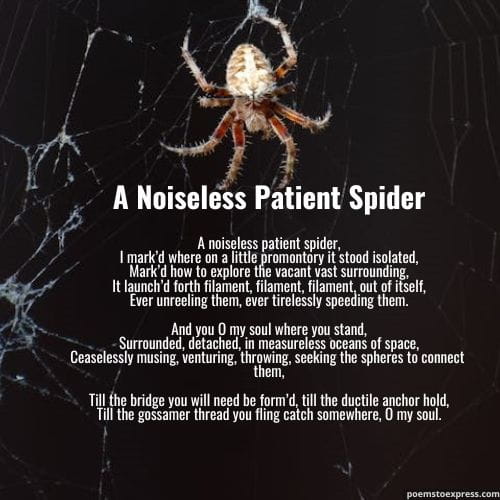
3) The Spider holds a Silver Ball by Emily Dickinson
The poem ‘The Spider holds a Silver Ball’ by Emily Dickinson uses the image of a spider weaving its web, a metaphor for ephemeral creation and the interaction between nature and humanity.
The spider web, crafted with meticulous effort and described with precious elements like silver and pearl, represents a work of art that, although brief and fragile, reflects a significant and sublime artistic process.
However, this art is ephemeral, as human intervention—symbolized by the housewife’s broom—eventually destroys the web, disregarding the limits imposed by nature itself.
The author of the poem wants us to appreciate the beauty and effort behind natural creations, which, although fleeting, are fundamental to our experience of the world.
The spider holds a Silver Ball
In unperceived Hands—
And dancing softly to Himself
His Yarn of Pearl—unwinds—
He plies from Nought to Nought—
In unsubstantial Trade—
Supplants our Tapestries with His—
In half the period… See full poem
4) ‘Pretty is That Pretty Does’ by Alice Cary
Alice Cary’s poem “Pretty is That Pretty Does” employs the metaphor of a spider spinning its web to explore themes of appearances versus actions.
The spider, described as plain and diligent, belies the deadly purpose behind its graceful spinning, illustrating the proverb that true beauty lies in one’s actions rather than appearances.
Cary contrasts the spider’s unassuming exterior with its predatory nature to emphasize that moral and ethical worth are determined by deeds, not by external factors or societal status.
The poem underscores the idea that integrity and virtue are defined by one’s behavior rather than superficial traits
The spider wears a plain brown dress,
And she is a steady spinner;
To see her, quiet as a mouse,
Going about her silver house,
You would never, never, never guess
The way she gets her dinner… See full poem
5) “The Spider as an Artist” by Emily Dickinson
The poem ‘The Spider as an Artist’ by Emily Dickinson uses the metaphor of a spider to explore themes of unrecognized talent and the valuation of art.
Dickinson personifies the spider as an unemployed artist, whose merit is widely recognized yet ignored by society. The repetition of ‘has never been employed’ underscores the irony of its unnoticed skill, despite being evident to everyone, from household tools to the wider community.
This poem reflects Dickinson’s possible perception of her own talent as a poet in an environment that did not always value her work.
The piece evokes reflections on the recognition and appreciation of art and the artist in any form.
The Spider as an Artist
Has never been employed—
Though his surpassing Merit
Is freely certified
By every Broom and Bridget
Throughout a Christian Land—
Neglected Son of Genius
I take thee by the Hand—
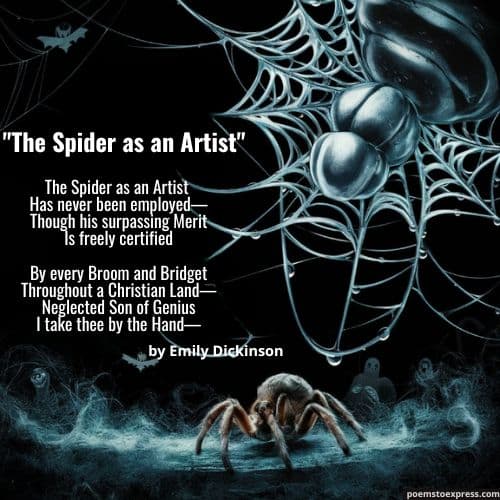
6) ‘Design’ by Robert Frost
Robert Frost’s poem “Design” explores the notion of a grand design in nature through a seemingly simple yet profoundly complex interaction among a spider, a moth, and a flower.
Frost uses vivid imagery and careful structure to question the existence and nature of a designer.
The poem, structured as a sonnet, contrasts the purity associated with the color white against dark thematic elements of death and predation, prompting reflection on whether there is malevolent intent.
The speaker’s contemplation on whether a small, everyday occurrence is governed by a grand design echoes broader existential queries about the universe and its creator.
I found a dimpled spider, fat and white,
On a white heal-all, holding up a moth
Like a white piece of rigid satin cloth--
Assorted characters of death and blight
Mixed ready to begin the morning right,
Like the ingredients of a witches' broth--
A snow-drop spider, a flower like a froth,… See full poem
7) ‘The Spider’s Web’ by E. B. White
The poem ‘The Spider’s Web’ (also known as ‘Natural History’) by E.B. White is a piece originally written as a love letter from the author to his wife in 1929.
The poem uses the image of a spider descending from a branch, deploying a meticulously conceived plan to weave its web, presented as a metaphor for returning to the starting point.
This metaphor reflects the author’s own journey, suggesting a return to his love and connection with his wife, symbolizing the journey and return with a thread of connection.
The structure of the poem, with its careful choice of words and rhythm, reflects the precision and art behind the construction of a spider’s web, parallel to the writing of a love letter.
The spider, dropping down from twig,
Unfolds a plan of her devising,
A thin premeditated rig
To use in rising.
And all that journey down through space,
In cool descent and loyal hearted,
She spins a ladder to the place
From where she started… See full poem
8) A Spider’s Web by Jonathan Platt
The poem ‘A Spider’s Web’ by Jonathan Platt is woven with language that evokes the magic and meticulousness of a spider’s creative process when building its web.
In the poem, the spider is almost presented as a sorcerer who laboriously creates its home, which is not only a trap for its prey but also a personal space crafted with great skill and care.
This approach invites readers to reflect on the beauty and complexity hidden in the everyday and natural aspects of life, highlighting the ingenuity and creativity observable in the natural world.
Silk-thin silver strings woven cleverly into a lair,
An intricate entwining of divinest thread...
Like strands of magic worked upon the air,
The spider spins his enchanted web -
His home so eerily, spiraling spreads.
His gossamer so rigid, yet lighter than mist,
And like an eight-legged sorcerer - a wizard blest,
His lace, like a spell, he conjures and knits;
I witnessed such wild ingenuity wrought and finessed,
Watching the spider weave a dream from his web.
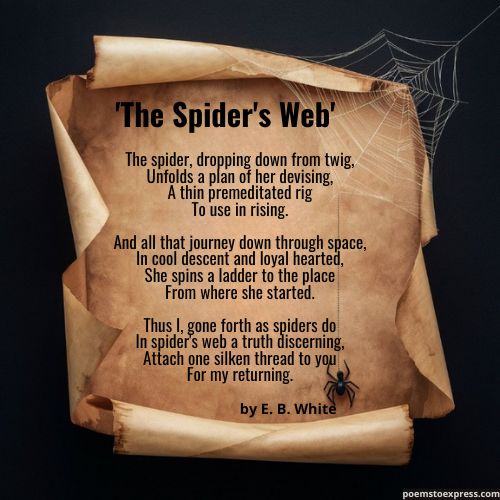
9) The Spider and the Ghost of a Fly by Vachel Lindsay
The poem ‘The Spider and the Ghost of the Fly’ by Vachel Lindsay uses a narrative structure where a spider consumes a fly, which then returns as a ghost to haunt the spider.
The poem explores themes of predation and vengeance, presenting a dark reflection on the cycle of life and death.
Lindsay captures the irony of nature through the use of vivid imagery and a narrative that evokes both the cruelty and the inevitability of the predator-prey relationship.
Once I loved a spider
When I was born a fly,
A velvet-footed spider
With a gown of rainbow-dye.
She ate my wings and gloated.
She bound me with a hair.
She drove me to her parlor
Above her winding stair.
To educate young spiders
She took me all apart.
My ghost came back to haunt her.
I saw her eat my heart.
10) A Fly Stuck In A Spider’s Web by Francis Duggan
The poem ‘A Fly Stuck In A Spider’s Web’ by Francis Duggan vividly describes the struggle of a fly caught in a spider’s web.
The poem captures the inevitability of the fly’s death as the spider prepares to consume it, reflecting the harsh reality of natural law where the predator must feed to survive.
Duggan uses this scenario to underline the brutality and beauty inherent in the natural cycle of life and death, emphasizing how even seemingly insignificant beings are subject to these universal laws.
A fly stuck in a spider's web gives a buzzing distress call
Too entangled for to fly free and too powerless for to crawl
Unto a safer surface for it no get away
The sleeky black house spider rushes forth and grabs it's prey… See full poem
Themes and Symbolism in Spider Poems
Here, we explore some of the most common themes and symbols found in spider poems.
1. Spiders as Symbols of Patience
One of the most prevalent themes in spider poems is the idea of patience and persistence. Spiders are often depicted as patient creatures, meticulously weaving their webs and waiting for their prey.
This can symbolize the importance of patience and perseverance in human endeavors. For instance, in Walt Whitman’s “A Noiseless Patient Spider,” the spider’s ceaseless efforts to spin its web reflect the human soul’s quest to connect and find purpose.
2. The Web as a Metaphor
The spider’s web is a powerful symbol that can represent various concepts, such as the complexity of life, the interconnectedness of all things, and the delicate balance of existence.
In Robert Frost’s “Design,” the intricate design of the spider’s web serves as a metaphor for the intricate and sometimes sinister designs of nature.
The web can also symbolize entrapment or fate, illustrating how individuals can become ensnared by their circumstances or choices.
3. Fear and Fascination with Spiders
Spiders evoke a wide range of emotions, from fear to fascination. This duality is often explored in spider poems, where the creature can be both a source of dread and a subject of wonder.
Mary Howitt’s “The Spider and the Fly” plays on the fear of deception and the consequences of naivety, while other poems may highlight the spider’s beauty and the marvel of its web-spinning abilities.
This theme underscores the complex relationship humans have with spiders, reflecting broader themes of fear, curiosity, and admiration.
You might also like:

